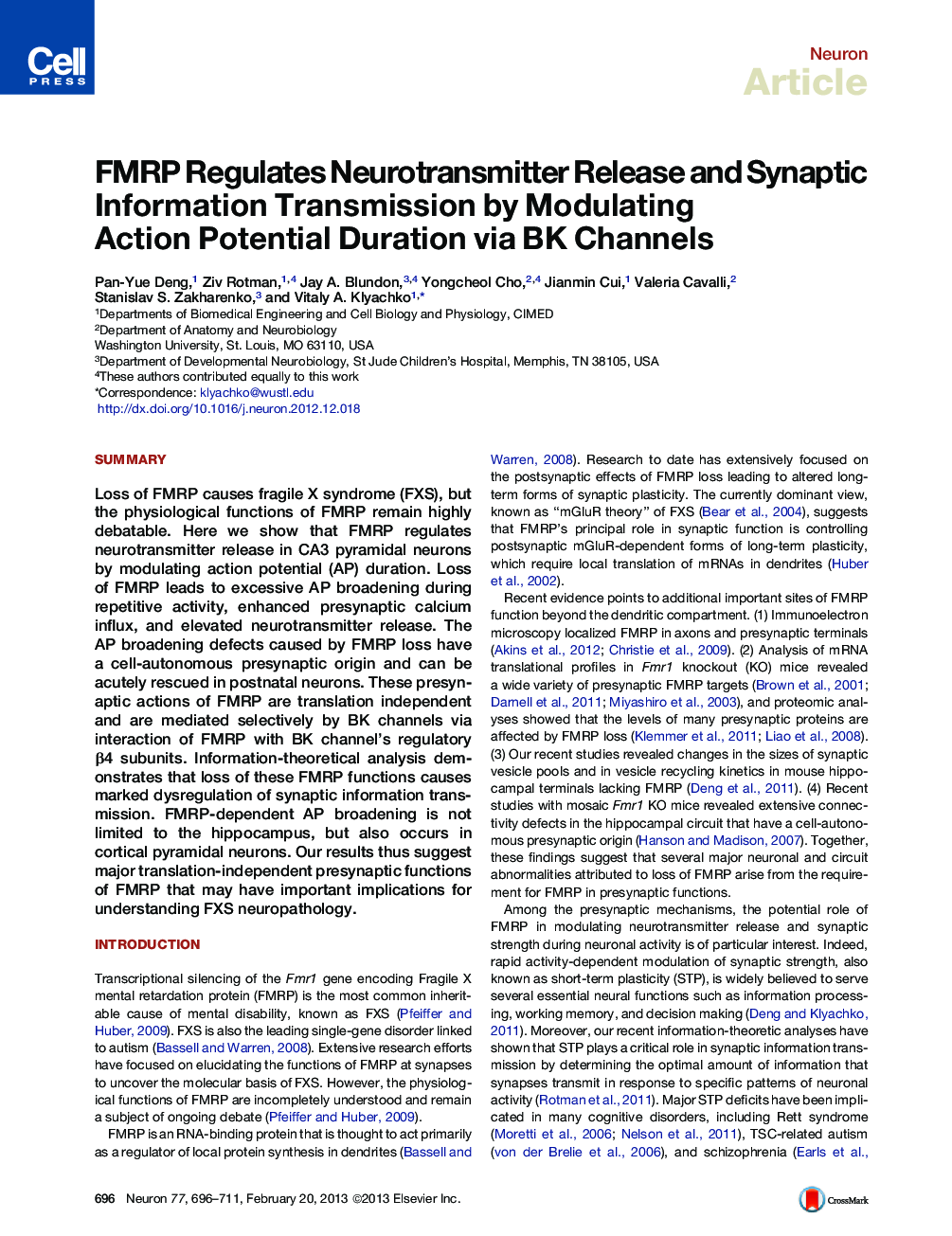| Article ID | Journal | Published Year | Pages | File Type |
|---|---|---|---|---|
| 4321365 | Neuron | 2013 | 16 Pages |
SummaryLoss of FMRP causes fragile X syndrome (FXS), but the physiological functions of FMRP remain highly debatable. Here we show that FMRP regulates neurotransmitter release in CA3 pyramidal neurons by modulating action potential (AP) duration. Loss of FMRP leads to excessive AP broadening during repetitive activity, enhanced presynaptic calcium influx, and elevated neurotransmitter release. The AP broadening defects caused by FMRP loss have a cell-autonomous presynaptic origin and can be acutely rescued in postnatal neurons. These presynaptic actions of FMRP are translation independent and are mediated selectively by BK channels via interaction of FMRP with BK channel’s regulatory β4 subunits. Information-theoretical analysis demonstrates that loss of these FMRP functions causes marked dysregulation of synaptic information transmission. FMRP-dependent AP broadening is not limited to the hippocampus, but also occurs in cortical pyramidal neurons. Our results thus suggest major translation-independent presynaptic functions of FMRP that may have important implications for understanding FXS neuropathology.
► FMRP regulates action potential duration via BK channels in hippocampal neurons ► FMRP acts via regulatory β4 subunit to modulate BK channel calcium sensitivity ► FMRP regulates presynaptic calcium influx, neurotransmitter release, and STP ► FMRP actions are cell autonomous presynaptic and translation independent
